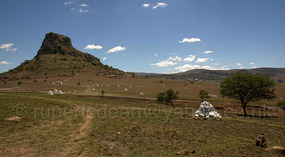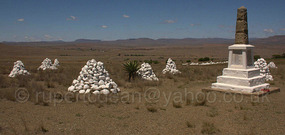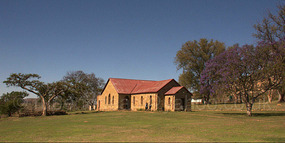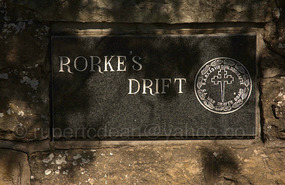Waking up in Fish Hoek was a little disorientating. All of sudden South America seemed a world away. The trip though, had been fantastic and just reinforced to me how great a country Peru is and how magical Manu and Chachapoyas are. I already started to plan the next visit in four years time, so I can trek with Ryse to the area of the Lost Inca City in the cloud forest around Manu plus visit Chachapoyas again and finally do the trek to Vira Vira.
The first few days in Fish Hoek were nice and warm, but soon the weather changed and it became cold and wet
. Dad, who was pleased to be back in his flat now had to concentrate on getting his move organised. I on the other hand realised I would have to move quickly if I was to get organised to return to North Eastern India and see the Indigenous Sporting Festival in Manipur around the 20th of Nov. A few quick phone calls ascertained that although the new leader Modi had promised a new type of India, the ridiculous rules for getting a tourist visa remain. The embassy in Johannesburg and the consulate in Cape Town both informed me that they could only grant visas to citizens and residents of South Africa. “You must go home and apply in England,” said one lady. I believe that it is always worth double checking everything an Indian bureaucrat tells you and a short search on the internet revealed that Bangkok was still granting visas to non-Thais.
A couple of hours later I had my flight. However I did decide to go via Kwa-Zulu Natal. Having missed the opportunity to see the battlefields from the 1879 Zulu War around Dundee when I arrived in South Africa due to illness, I was certainly not going to miss them as I left
. Being pressed for time this meant I could not drive (as I would have to return the car to Fish Hoek), so I booked a flight and hire car to coincide with my departure from Johannesburg.
This left me a few days in the Cape, where I caught up with people I knew and had some nice dinners. I also had a dentist visit to do and sort out my back pack, making sure it was a lot lighter for this Asian leg of the trip. I also managed to fit in a few bird trips including one to Century Park in the middle of Cape Town the turned out to be excellent. Dad came for that and hopefully he will go back.
Finally I said my goodbyes to my father after a full four months of travel and wished him luck in finding some new digs. My morning flight on Mango was seamless and soon I was in the hire car driving through Durban. Gusty wind and driving rain was the only impression I had of the city, but I knew the forecast promised fine weather for Sunday when I was due to visit the battlefields, so I relaxed somewhat
.
Originally I was planning on a much longer visit to Kwa-Zulu Natal, but with the realisation that Indian bureaucracy could scupper my plans of seeing this festival, I have had to put that visit on the back burner. The battlefields though had been a dream destination since I was at school, where I was fascinated by the stories of the Zulus, Isandlwana, Rorke’s Drift and (to some extent) Michael Caine. “The Washing of the Spears” was one of the first books I recall reading and whilst in Ethiopia earlier in the year I had read the acclaimed Zulu by Saul David in preparation for this visit. So there was no way that I would not sandwich a visit in between arriving and leaving South Africa.
Unfortunately time was really not on my side. My father who had visited the battlefields whilst I was in Madagascar, was keen that I approach the battlefields by driving through the Midlands Meander
. Unfortunately I did not even have time for this as I sped past on the main highway, just managing to arrive at my B&B in Glencoe as the sun was setting.
Dundee is seen as the centre for the battlefield activities, whether associated with the British-Zulu War or the Boer-British War. I knew nothing about the later, so was only interested in the former. However the one weekend I had decided to visit was the weekend of the Dundee Festival. I ended up having to look for some accommodation in neighbouring Glencoe.
The Mountain View Guest House was one of those places that I will not forget in a hurry, like Jean’s House in the Galapagos or Mamit Guest House in Addis Ababa or Baruah Bhavan Guesthouse in Assam, India or Halgolla Plantation Home near Kandy in Sri Lanka. The Manageress Lee welcomed into the guesthouse which was ultra comfortable. The bed was magnificent, the shower was superb. Lee was incredibly friendly and had helped me heaps even before I arrived.
When I booked this trip I contacted a Zulu guide in Dundee. I was keen to get a different perspective of the war and this man appeared to offer it. Unfortunately he had to cancel at the last minute and I turned to Lee who set me up with a man from Dundee, Mr Paul Garner. A quick double check on Trip Advisor showed his credentials and some fine reviews.
Glencoe was a quiet sleepy place with not much to detain me. I was therefore pleased with myself that I had booked the dinner option with Lee. However I was completely unprepared for the quality which she produced for both dinner and breakfast and what I ate was often better than what I had experienced in some of the restaurants in the Cape.
The following morning, the skies were cloudless and a deep blue, it was warm and still as I headed off to Dundee some ten minutes away. Paul was waiting outside his house with a couple of comfy chairs and wearing a black bowler hat. I immediately liked him as he squatted in the front of my tiny car and we headed off first towards Rorke's Drift.
Without going through a blow-by-blow account of my day with Paul, I just have to mention how excellent this excursion was. Paul was outstanding, not just in his knowledge and obvious enthusiasm for the subject, but also in his story telling ability - which at times had me on the edge of my seat. This far exceeded my expectations for my visit and Paul will remain one of the very best guides I have experienced in any country.
We started off at the Buffalo River crossing next to Rorke’s Drift where the British Army first entered the Zulu lands. Paul filled in the background to the conflict and talked about many of the personalities involved. He also talked about the land, the river and the Zulu beliefs, weapons and culture. We then followed the route of Chelmsford’s British into “Zululand” (as it was in 1879) to where the first skirmish took place close to Isandlwana. This was far more important than my readings had suggested and Paul started to quote individual soldier’s accounts from the archives (this impressed me greatly) which he had read.
We next moved on to the site of the Battle of Isandlwana. Here we entered after paying the fees and droving around the base of the famous craggy rock, parking just below the saddle area next to the giant rocky outcrop. What was immediately so thought provoking was the concentration of white stone cairns placed randomly at various intervals in the battlefield. Some were grouped together in quite large concentrations over what must have been the British Camp. Paul immediately explained that these signified the un-marked graves of many British soldiers, buried anonymously where they fell sometimes up to fifty to a grave. The scale of the defeat quickly became apparent from the views at the base of the giant rock.
We parked and walked up the side of an adjacent little hill that afforded an excellent view of the battlefield and here Paul set up the chairs. He then described in detail the camp, the Zulu and British movements that day and the battle itself. As we discussed what had happened I also realised these striking white cairns illustrated the desperate and panicked retreat of the British soldiers past the craggy rock down towards Fugitives Drift (not far from Rorke’s Drift but a far more dangerous crossing) all the while being attacked by Zulu warriors. The terrain and the boulders now made much more sense. Fleeing soldiers were just killed by the agile Zulus as they tried to get to the river. All the while Paul interwove his account with personalised stories of individual soldiers from the archives or Zulu recollections handed down by story tellers - fascinating.
After we had finished I took time to walk around the battlefield up to the Saddle where the disastrous retreat had started and looked at the line of white cairns heading off towards the Buffalo River and Fugitives’ Drift. It was very thought provoking.
Soon we had the chairs packed away and were retracing our steps back to Rorke’s Drift. Here we enjoyed a small bite to eat before strolling over to the area in front of the original Kraal just opposite where the original store house used to be (its now a church). Paul then pulled out the chairs before starting to narrate the events that happened here in great detail. He started with the approach of the 3-4,000 Zulu fighters. This was part of the victorious army who had not been utilised at Isandlwana. He also covered the preparations of the British soldiers and outlined the famous wall they constructed with Mealy bags and biscuit tins.
Again illustrating every preparation and then every position of the defenders and where the zulus attacked from, Paul managed to build a very vivid picture of the battle lasting 24 hours in my mind. Most of the extraordinary courage was shown in the hospital which had no internal connecting walls. The defenders, including many who were bed ridden, had to defend their positions with no real escape (as only one side of the wall backed onto the secured area provided by the biscuit tin/mealy box defensive wall). Defenders had to repulse the attacking Zulus and then some had to break through the walls of the hospital to try and retreat to safety. All the while the imagery Paul’s storytelling provoked in me was extraordinary, aided by our walks around the outside of the hospital building that stood some 30 yards away from the Kraal and Storehouse.
Paul went into great depth about individual soldiers in the hospital including those with miraculous escapes and those who faired less well. He then described the scrambled retreat to the storehouse as the hospital and kraal were over run and the many attempts and strategies the Zulu fighters employed to take the storehouse.
It was a full two hours before he came to describe the end of the battle of Rorke’s drift, including for me his most memorable story. This was a vivid portrait of the defeated Zulu army under the leadership of Prince Dabulamanzi crossing the Buffalo River and slowly marching towards the saddle of the Isandlwana hill. Here in the early morning mist (I imagined) they passed “not 200 years” from the main column of Chelmsford’s relief column who just visited the horrific sights at Isandlwana. A corporal who wrote this in his diary, according to Paul, mentioning that both forces acknowledged each other in passing but were so defeated they just rode past each other - in complete silence.
After hearing the full story I visited the museum now housed in the reconstructed hospital. Paul also showed me where the defensive perimeters had been built by the soldiers out of mealy boxes and biscuit tins. I visited the memorials to the British soldiers and the new elegant memorial to the Zulu fighters.
From here we returned slowly back to Dundee. I was so pleased with this visit, it had truly lived up to my expectations and my knowledge had greatly improved. Plus I was already thinking about returning one day to visit the other battle sites in this 1879 conflict.
I said goodbye to Paul as I dropped him at his house, and thanked him. I also thanked Lee for organising him when I returned to Mountain View. I was the only guest that night, so I had a good chat with Lee.
Next morning I packed and left early for the five hour drive to Joburg. It was pretty nondescript drive along this highway north as I had to avoid the more picturesque slower road and take this fast option. I arrived in plenty of time and was soon lifting off in the plane, away from Africa on my way back to Bangkok and to renew my struggles with Indian bureaucracy (see blog 01).
Battlefields, Zulus, 1879, Leaving South Africa
Saturday, October 18, 2014
 Dundee, KwaZulu-Natal, South Africa
Dundee, KwaZulu-Natal, South Africa
Other Entries
-
64Fog, concrete, sand, cold, wind plus illness
Jul 1793 days prior Walvis Bay, Namibiaphoto_camera5videocam 0comment 0
Walvis Bay, Namibiaphoto_camera5videocam 0comment 0 -
65Red Dunes, Mud Flats, Quiver Trees plus Sand
Jul 2387 days prior Keetmanshoop, Namibiaphoto_camera5videocam 0comment 0
Keetmanshoop, Namibiaphoto_camera5videocam 0comment 0 -
66Breaching Sharks, Rooibos and Rain
Aug 0178 days prior Vanrhynsdorp, South Africaphoto_camera4videocam 0comment 0
Vanrhynsdorp, South Africaphoto_camera4videocam 0comment 0 -
67Robbery, Raw Fish, Cloudy and Drizzle
Aug 0574 days prior Lima, Peruphoto_camera4videocam 0comment 0
Lima, Peruphoto_camera4videocam 0comment 0 -
68Camille Schaeffer and Family RIP
Aug 1168 days prior Lima, Peruphoto_camera1videocam 0comment 0
Lima, Peruphoto_camera1videocam 0comment 0 -
69Rest, Lines, Vines and Sand
Aug 1267 days prior Ica, Peruphoto_camera4videocam 0comment 0
Ica, Peruphoto_camera4videocam 0comment 0 -
70Incas, Ruins, Trains, Parasites, Veganism
Aug 1960 days prior Cusco, Peruphoto_camera4videocam 0comment 2
Cusco, Peruphoto_camera4videocam 0comment 2 -
71Cloud Forest, Ruins, Birds, Animals, 50th
Aug 2455 days prior Manu National Park, Peruphoto_camera5videocam 0comment 0
Manu National Park, Peruphoto_camera5videocam 0comment 0 -
7250th part 2, Otters, Macaws, Jaguar, Tiramisu
Aug 3049 days prior Puerto Maldonado, Peruphoto_camera6videocam 0comment 0
Puerto Maldonado, Peruphoto_camera6videocam 0comment 0 -
73Finches, Volcanos, Tortoises & Darwin
Sep 0345 days prior Puerto Ayora, Ecuadorphoto_camera7videocam 0comment 0
Puerto Ayora, Ecuadorphoto_camera7videocam 0comment 0 -
74Sharks, Penguins, Sea Lions and Boobys
Sep 1038 days prior Puerto Villamil, Ecuadorphoto_camera6videocam 0comment 0
Puerto Villamil, Ecuadorphoto_camera6videocam 0comment 0 -
75Frigates, Poor Service, Iguanas, Diving Pelicans
Sep 1335 days prior Guayaquil, Ecuadorphoto_camera5videocam 0comment 0
Guayaquil, Ecuadorphoto_camera5videocam 0comment 0 -
76Car Crash, Chachas, Mules and Blood
Sep 1830 days prior Chachapoyas, Peruphoto_camera4videocam 0comment 0
Chachapoyas, Peruphoto_camera4videocam 0comment 0 -
77Kuelap, Mummies, Ruins, Hummingbirds
Sep 2523 days prior Leymebamba, Peruphoto_camera6videocam 0comment 0
Leymebamba, Peruphoto_camera6videocam 0comment 0 -
78Sarcophagi, Fountains of Blood, Horseback
Sep 2820 days prior Cuispes, Peruphoto_camera3videocam 0comment 0
Cuispes, Peruphoto_camera3videocam 0comment 0 -
79Waterfalls, Rain and Loud Peruvian Pop Music
Sep 2919 days prior Pedro Ruiz, Peruphoto_camera4videocam 0comment 0
Pedro Ruiz, Peruphoto_camera4videocam 0comment 0 -
80Hummingbirds, Orchids, Coffee and Stomach Bugs
Oct 0216 days prior Moyobamba, Peruphoto_camera5videocam 0comment 0
Moyobamba, Peruphoto_camera5videocam 0comment 0 -
81Battlefields, Zulus, 1879, Leaving South Africa
Oct 18 Dundee, South Africaphoto_camera4videocam 0comment 0
Dundee, South Africaphoto_camera4videocam 0comment 0 -
82Mr India, X Factor Naga style, Exotic Food
Nov 0619 days later Mokokchung, Indiaphoto_camera5videocam 0comment 0
Mokokchung, Indiaphoto_camera5videocam 0comment 0 -
83Burma, Headhunters, Opium & Dust
Nov 0922 days later Launghe, Myanmarphoto_camera4videocam 0comment 0
Launghe, Myanmarphoto_camera4videocam 0comment 0 -
84History, bad guesthouses, hills, Wakching
Nov 1427 days later Mon, Indiaphoto_camera4videocam 0comment 0
Mon, Indiaphoto_camera4videocam 0comment 0 -
85Skulls, Fertility, Opium, Anghs, Warriors
Nov 1730 days later Shengnya, Indiaphoto_camera5videocam 0comment 0
Shengnya, Indiaphoto_camera5videocam 0comment 0 -
86Elders, Changs, Culture, Families and Skulls
Nov 2235 days later Tuensang, Indiaphoto_camera5videocam 0comment 0
Tuensang, Indiaphoto_camera5videocam 0comment 0 -
87Sangai Festival - Kang, Hockey/Wrestling, Polo etc
Nov 2841 days later Imphal, Indiaphoto_camera5videocam 0comment 0
Imphal, Indiaphoto_camera5videocam 0comment 0 -
88Hornbill Festival, Loin Looms & Naga Culture
Dec 1053 days later Kohima, Indiaphoto_camera10videocam 0comment 0
Kohima, Indiaphoto_camera10videocam 0comment 0 -
89Birds, Rubbish, Grasslands, Rubble, Tribes etc
Dec 1457 days later Nakhatrana , Indiaphoto_camera5videocam 0comment 0
Nakhatrana , Indiaphoto_camera5videocam 0comment 0 -
90Embroidery, Rogan, Block Printing, Tribes
Dec 1760 days later Bhuj, Indiaphoto_camera5videocam 0comment 0
Bhuj, Indiaphoto_camera5videocam 0comment 0 -
91Lions, Nitin, Bird Spotting, Sleeper Bus Part 1
Dec 2164 days later Gir, Indiaphoto_camera6videocam 0comment 0
Gir, Indiaphoto_camera6videocam 0comment 0 -
92Island Life, Portuguese Colony, Christmas
Dec 2568 days later Diu, Indiaphoto_camera4videocam 0comment 0
Diu, Indiaphoto_camera4videocam 0comment 0 -
93Restaurant Tombs, Mosques, Markets
Dec 2871 days later Ahmedabad, Indiaphoto_camera5videocam 0comment 0
Ahmedabad, Indiaphoto_camera5videocam 0comment 0 -
94Birds, NYE, Dhows, Feral Dogs, Shaves
Dec 3174 days later Mandvi, Indiaphoto_camera6videocam 0comment 0
Mandvi, Indiaphoto_camera6videocam 0comment 0 -
95Blue Moon, Salt Flats, Crafts
Jan 0276 days later Bhujodi, Indiaphoto_camera5videocam 0comment 0
Bhujodi, Indiaphoto_camera5videocam 0comment 0 -
96Calico Musuem, Festival Prep, Street Life
Jan 0680 days later Ahmedabad, Indiaphoto_camera5videocam 0comment 0
Ahmedabad, Indiaphoto_camera5videocam 0comment 0 -
97Leopards, Shepherds, Turbans and Aristocrats
Jan 1185 days later Bhenswara, Indiaphoto_camera5videocam 0comment 0
Bhenswara, Indiaphoto_camera5videocam 0comment 0 -
98Birds, Fog, Bad Internet, Old Friends
Jan 1488 days later Jodhpur, Indiaphoto_camera7videocam 0comment 0
Jodhpur, Indiaphoto_camera7videocam 0comment 0 -
99Tigers Tigers Tigers Tigers and oh Tigers
Jan 1791 days later Sawai Madhopur, Indiaphoto_camera6videocam 0comment 0
Sawai Madhopur, Indiaphoto_camera6videocam 0comment 0

 Dundee, KwaZulu-Natal, South Africa
Dundee, KwaZulu-Natal, South Africa









2025-05-22